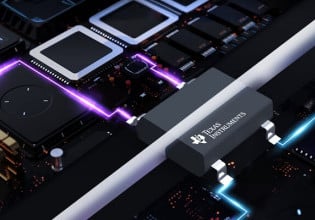Nvidia, Qualcomm, Hyperbat to Design EV Batteries in VR
U.K.-based battery manufacturer Hyperbat developed an extended reality experience using VR and 5G to create a virtual workspace for engineers building EV batteries.
Hyperbat, one of the UK’s largest independent manufacturers of electric vehicle (EV) batteries, recently unveiled a new digital twin project combining a 5G network, virtual reality (VR) headsets, and advanced rendering and 3D modeling software to produce a realistic virtual workspace for engineers building EV battery designs.

Hyperbat is using a digital twin to design its EV batteries in VR. Screenshot used courtesy of UnipartGroup
Incorporating technology from Nvidia, Qualcomm and Ericsson, among other partners, Hyperbat developed a proof-of-concept in which its design and factory teams utilized 5G-enabled VR to work on a digital twin of an EV battery from locations roughly 70 miles apart.
Trialed at Hyperbat’s plant in Coventry, the project bills itself as a solution for eliminating inefficiencies early in the manufacturing process. Because the digital twin model is integrated directly into the teams’ computer-aided design (CAD) software, it’s easier for engineers to identify potential problems that would otherwise be encountered later in production.
The project is designed to eliminate inefficiencies early in the manufacturing process. Video used courtesy of UnipartGroup
The market is growing for digital twin software, programs capable of running complex virtual simulations based on real-time data. With Industry 4.0 expanding into smart automation and advanced computing, digital twins have found a natural application in the manufacturing sector. And amid the rise in just-in-time production and automated workflows, new data analysis methods are needed to identify bottlenecks and inefficiencies as they happen.
The Tech Behind Hyperbat’s Digital Twin Use Case
Using hardware and software, Hyperbat’s design and production teams can collaborate on projects from miles apart as if they were physically sitting next to each other.
The data is transferred through an ultra-low latency 5G private network provided by Ericsson and BT. Using VR headsets integrated with Qualcomm’s 5G Snapdragon XR2 chipset, teams can complete tasks in a virtual setting with realistic rendering from NVIDIA’s GPUs and virtual workstation software.
The project runs on Masters of Pie’s Radical software development kit, which provides real-time sharing of 2D and 3D data, including a life-sized model of an EV battery, across extended reality devices.
The Industry 4.0 concept brings a more seamless design and manufacturing process to Hyperbat, which operates as a joint venture between engineering services firm Williams Advanced Engineering and supply chain consultancy Unipart Manufacturing Group.
The two companies formed Hyperbat in 2018 intending to become Britain's largest independent producer of EV batteries. The company started operations at its Coventry-based factory in 2019, supplying batteries for Aston Martin’s limited-production Rapide E EV with plans to expand to other carmakers.

Aston Martin’s Rapide E. Image [CC BY-SA 4.0] used courtesy of Vauxford
In April 2021, Hyperbat and a cross-disciplinary group of technology companies announced they were partnering on a digital twin concept to be applied across engineering and manufacturing processes.
Describing the project in a press statement, Unipart Manufacturing Digital and Innovation Manager Hosein Torabmostaedi said the solution “lays the foundation for smart factory architecture and efficient, flexible and collaborative manufacturing.”






